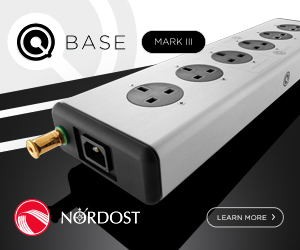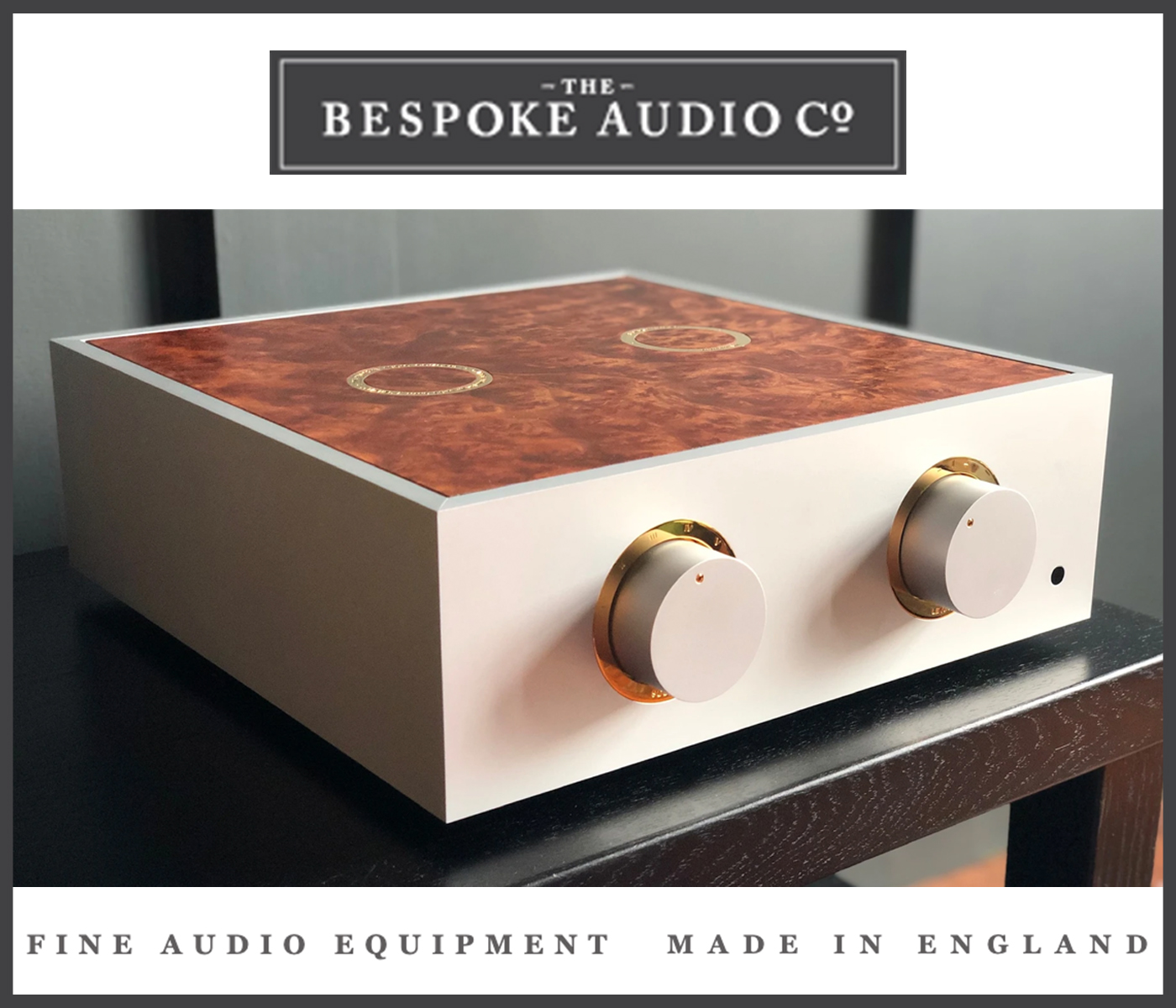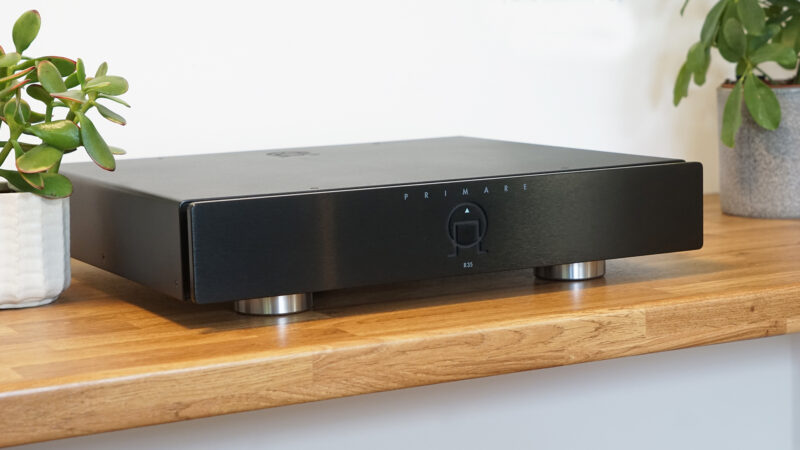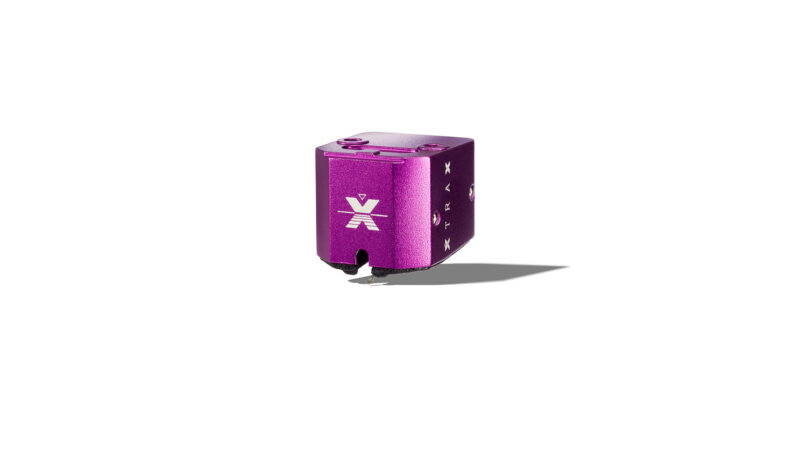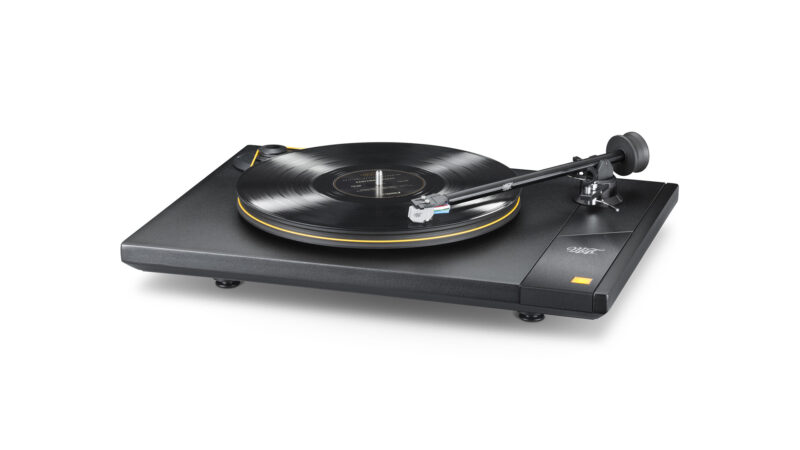Leaving aside the current trend for retro inspired loudspeakers sporting massive woofers that mirror those of yesteryear, it’s the turntable sector that arguably dines out the most on hifi nostalgia.
Sure, many longstanding brands have long lists of improvements under their benchmark products’ skins, but a quick glance at the current crop from industry stalwarts like Linn, Michell and SME to name but three, reveals that outwardly they’ve stuck to the same formula that made their names way back when.

Vertere’s DG-1S looking everybit the modern spinner
Vertere Acoustics however takes a very different visual approach. If you’d have shown one of its decks to any hifi fan forty years ago and said “this is how turntables will look in 2023”, once they’d got over the initial shock that vinyl would still be around four decades on, they’d likely be fascinated and excited in equal measure, but not necessarily surprised. Because Vertere’s products look every inch the vinyl player for the modern age. If Kubrick was making A Clockwork Orange today, this is the deck it’d feature.
Enviable legacy
Let’s not forget though, that Vertere is no newbie to hi-end hifi, being founded by Touraj Moghaddam of Roksan fame, whose Xerxes deck is just as lauded as other vinyl playing icons of the last four decades. But that was then, and Vertere is very much now, with an ever expanding product range that includes turntables, cartridges, phono stages and even LPs.
The DG-1S is the cheapest of four turntables Vertere offers, which tops out with the RG-1 Reference Groove player, and in basic guise the DG-1S costs £3,550, with Groove Runner S tonearm.
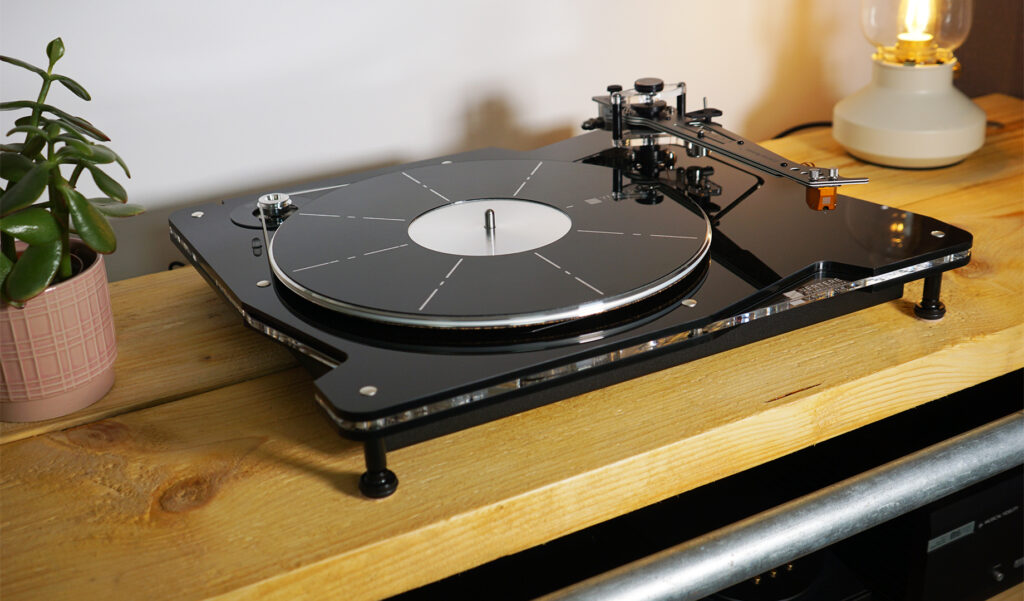
DG-1S without the upgraded Techo Mat. Those lines on the standard platter aren’t just for show, with points to aid cartridge alignment
For the full fat Vertere experience we opted for the higher spec Sabre pack at £5,300, which includes the hi-end Sabre moving-magnet (MM) pick-up, Techno Mat, Redline interconnect cable and a trio of Iso-Paw feet. We also added in the upgraded dedicated Challenger DC PSU (in place of the standard wall wart) at £495 and Phono-1 MKII L MM/MC preamp at £1,450, for a fully fledged Vertere vinyl rig, bringing the total price to £7,245.
And what this buys you is a very comprehensive package indeed. Starting with the deck, the DG-1S‘s main chassis is formed from three layers of cast acrylic that are bonded together, with the middle one being clear and internally lit. The deck’s underside hides a black zintec steel chassis which houses the deck’s electronics, and the whole unit resides on three height adjustable felt-tipped feet. While looking like a rigid design, the chassis houses an internal subchassis which carries the main bearing and tonearm that’s isolated via six bespoke silicone rubbers which add a degree of suspension (in the similar manor that Minis of old employed space-saving rubber pods instead of springs).
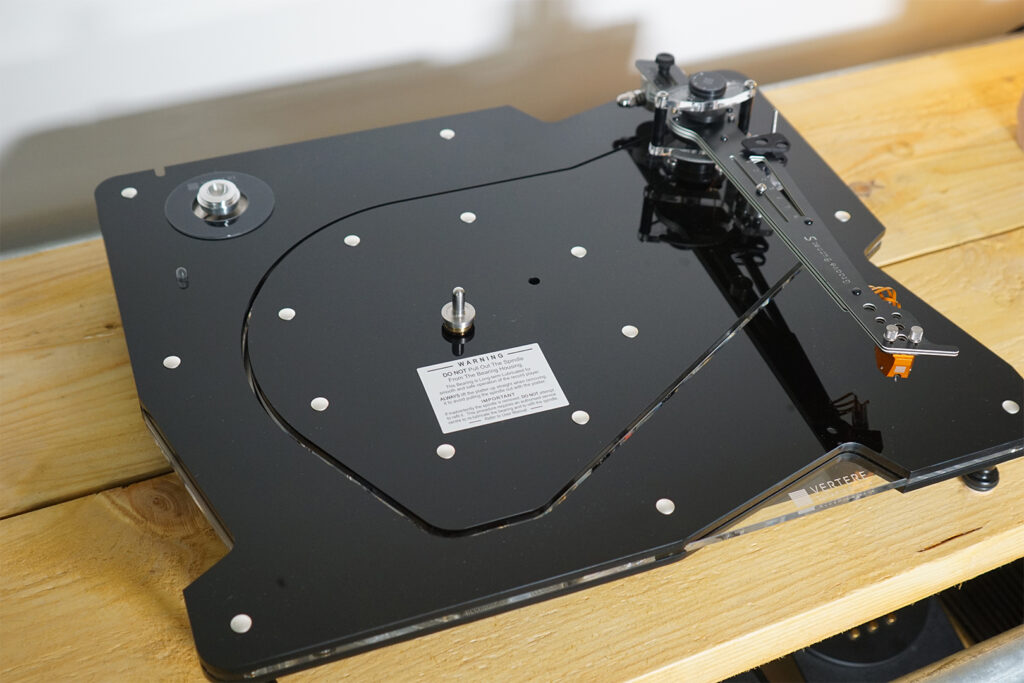
With platter removed, revealing the inner suspended chassis that’s isolated from the main plinth
The main bearing spindle is precision machined with a core tolerance of just <5 Microns and spins on a tungsten carbide ball. The platter also gets the precision machined treatment, this time from machined aluminium alloy at its centre with a groove milled into its outer edge for the drive belt. A dedicated interface mat is bonded to topside (complete with cartridge alignment points as part of its visual design) and on its underside sits a resonance control layer made up of cork, neoprene and nitrile.
The deck’s 24 pole synchronous motor that’s mounted to the main plinth is just as well thought out, with electronically selectable speeds for 33.3 and 45rpm, governed via an internal microprocessor, with bridged balanced output amplifiers and an acetal spindle thrust bearing.

Motor pulley and on/off switch, glowing green for 33.3rpm (or red for 45rpm). It also controls the chassis’ internally lit middle layer, which can be set to always on, always off and on only when the motor is spinning
Positioned at the 11 o’clock position, the motor is also decoupled from the main chassis for added isolation and can rotate on its own axis, to counteract the drive belt stretching and contracting, resulting in greater speed stability.

The whole decks is supported by three felt tipped adjustable feet
It’s a tonearm Jim, but not as we know it
In a world of traditional tubes and metal bearings, perhaps the most striking element of the Vertere’s design that breaks from tradition is its Groove Runner S tonearm, which is formed from five flat layers of polymer plastics, referred to as upper and lower beams, with internal damping built in. A thread bearing design, it employs a single twist of Nylon governing its horizontal motion and two high strength Kevlar threads controlling vertical movement.
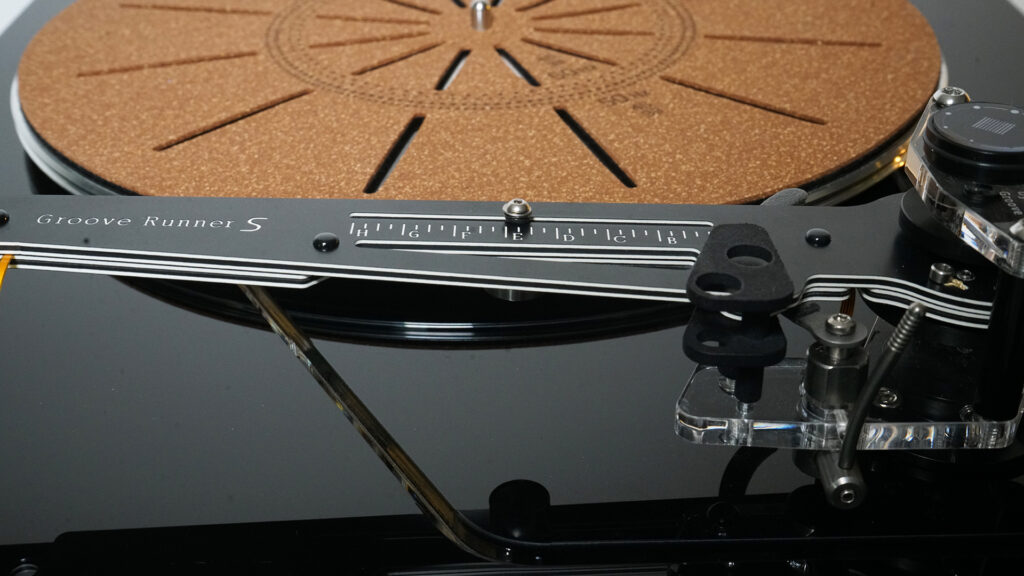
Groove Runner S tonearm. The sliding scale and screw correspond with an underslung weight for fine tuning downforce
Tracking force is set initially via a stainless steel counterweight that sits under the back of the arm to keep its centre of mass low, with stainless outriggers that can be wound in/out to finely adjust azimuth, should you need to. To fine tune downforce there’s a smaller weight tucked under the arm’s main beam midway along, with clearly printed scales to guide you. This fore and aft weighting is a big like SME’s 3009 of decades past, only light years ahead, which is further underlined thanks to an internal PCB within the arm wand in place of conventional tonearm cabling.
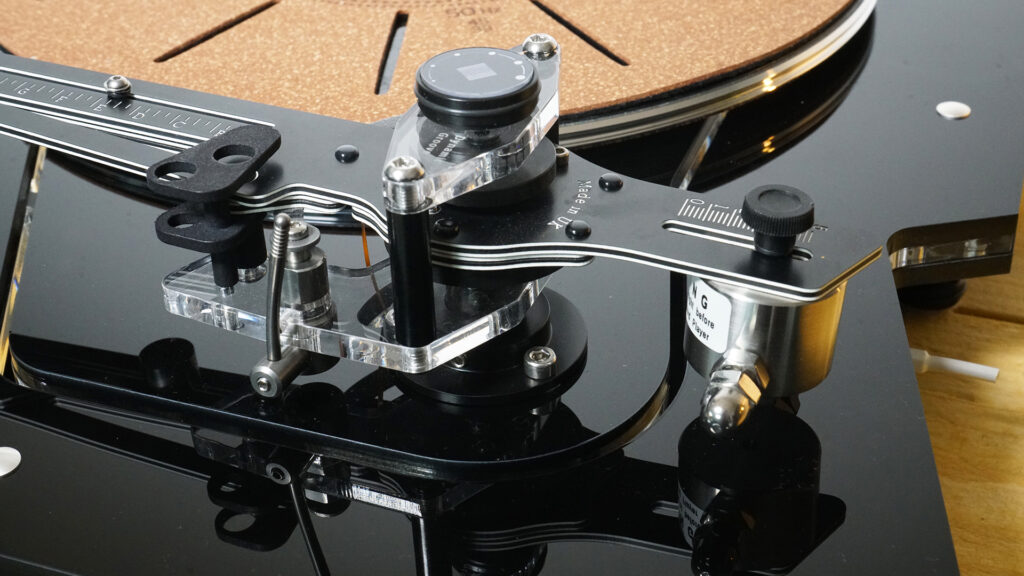
Tonearm rear showing the main counterweight with threaded outriggers for azimuth tweaking. Spin dial atop the main bearing adjusts anti-skate, with everything clearly labelled
Anti-skate is set via a dial atop the main bearing, which adds more twists to the internal thread.
There’s also arm height adjustment on offer via an allen headed locking screw at the arm pillar’s base, although our test model came ready set and just needed downforce applying.
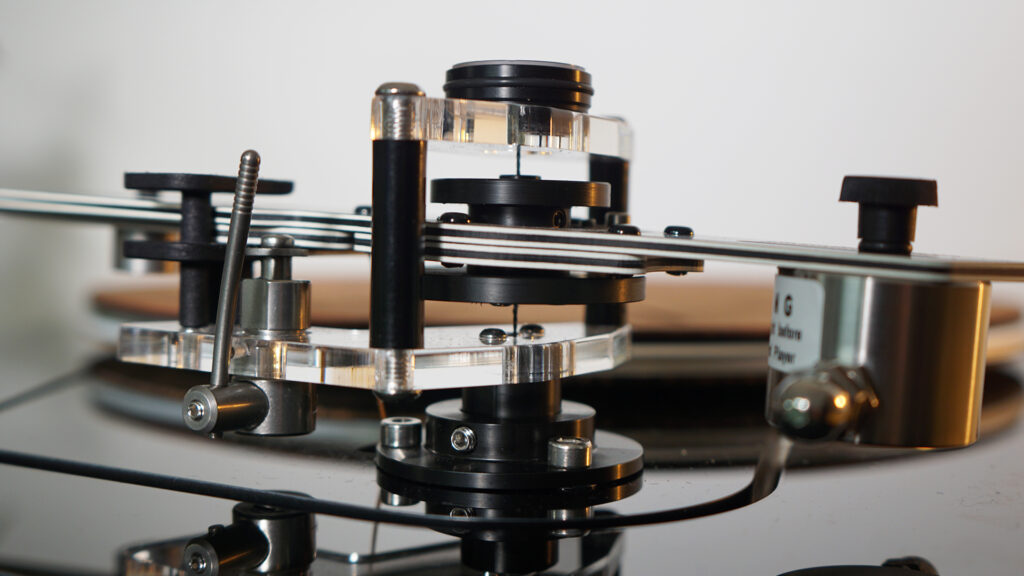
Breaking from tradition, a thread bearing governs vertical and horizontal movement. Note the allen head screw at the base of the arm pillar for raising/lowering the assembly to set VTA
What a body
Resplendent in sunshine ‘Vertere’ orange (Dulux take note), the Sabre MM pick-up costs £950 on its own and comes housed in a precision machined aluminium body, which minimises resonance by having three contact points on its upper surface (as opposed to the whole upper surface mating with the tonearm headshell). Its internal generator is precision fixed to this outer shell via four ‘spike’ screws.
For signal generation, an elliptical diamond and telescopic alloy cantilever drive an alnico magnet, generating a healthy 4.3mV output.
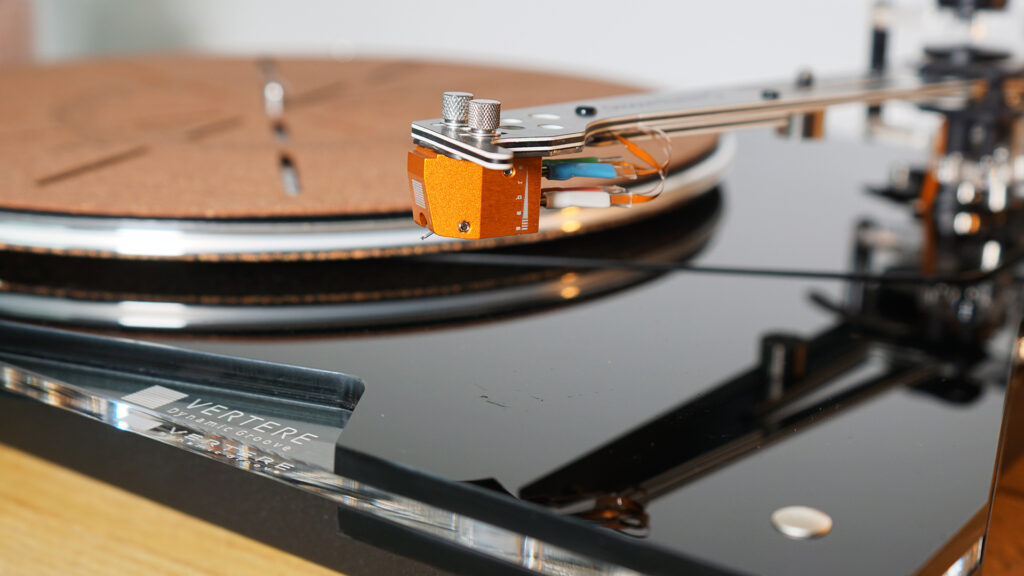
Vertere Sabre pick-up is a hi-end MM design in a CNC precision machined alloy body
Of course any cartridge is only as good as its partnering phono stage, and the Phono-1 MKII L is full of promise with 15 resistance and nine capacitance settings across MM and MC settings, and gain ranging from 40.2-62.8dB over a dozen steps. Inside, its main phono circuits and linear mains transformer sit on separate gold plated PCBs. And yet despite an almost dizzying array of settings, each adjustment can be made via clearly labelled sliders on its underside, making it user friendly (rivals requiring fiddly lid removal and jumper swapping take note!).
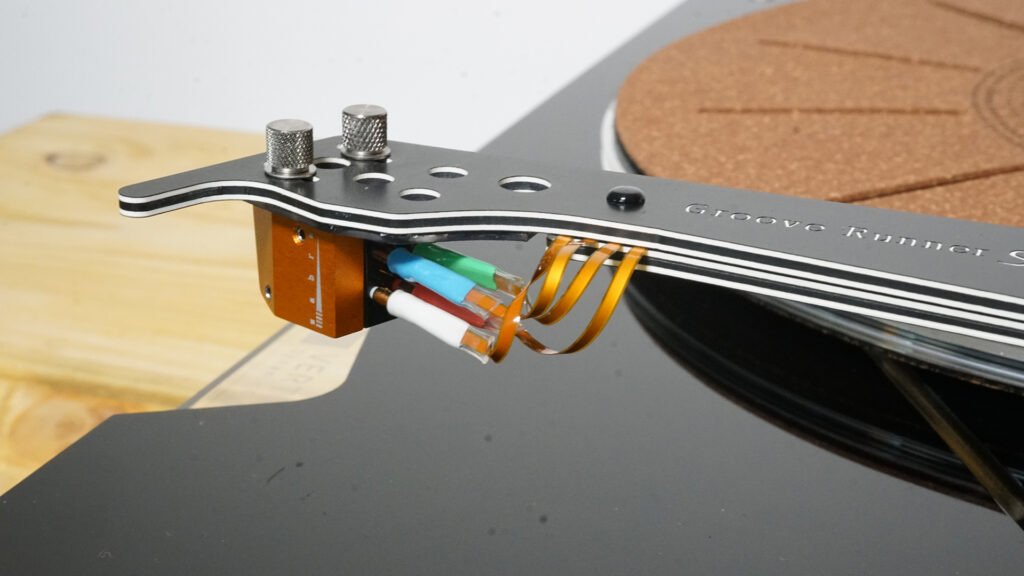
Cartridge tags extend from ribbon cables attached to the PCB inside the tonearm, in place of conventional wires
Performance
Taking into its suspended design could wrongly imply set-up needs to be just as detailed, when instead its a relative breeze to get going.
After unboxing you’ll need to remove a large transit bolt from the deck’s base, before removing a second transit bolt that secures the tonearm.
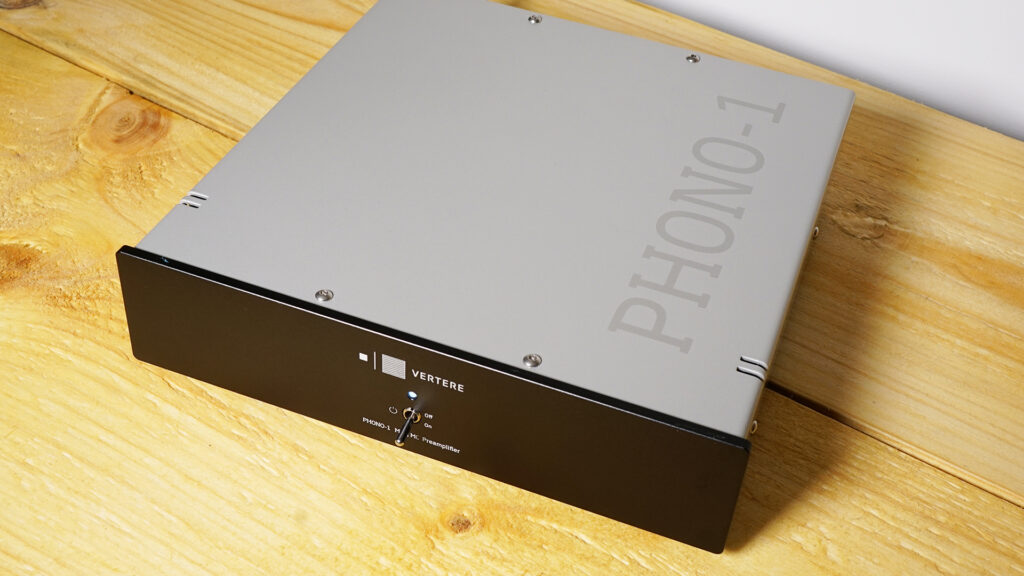
Phono-1 MKII L may look simple but is packed with a wealth of cartridge settings. Front panel finishes include ‘Vertere orange’ as well as silver and black (above)
Next up is aligning the pick-up via two printed points on the platter (if you’ve not bought a deck with a pre-mounted cartridge). Tracking force is also easy to apply, and I applaud any manufacturer that includes a digital scale with their product to help customers get the best from their purchase. You do need to be a little careful in making sure the counterweight stays in place when tightening, as its rubber O-rings can cause it to move slightly as they compress, but the mid-way arm weight is there to make fine-tuning easy.

Clearly labelled RCA outputs allow for cables of your choosing. Sleeve covered earthing point is easier to grasp than most rivals’ fiddly screws
Partnering kit are Musical Fidelity M6 pre/power amps and Perlisten R5t loudspeakers.
I had a few preconceptions about this deck (call it conscious bias if you will), being relatively lightweight, sans record clamp and with a platter thickness that’s not of the usual doorstep height variety I’ve grown used to. I was expecting it to sound full of rhythm while perhaps without the ultimate soundstage depth and scale of higher mass designs. But this merely highlights why our ears are the best judge of any given bit of gear, as the DG-1S package sounds every bit as heavy weight as its more beefy rivals.
Spinning Tori Amos’s era defining Cornflake Girl from her 1994 Under The Pink LP and the Vertere delivers her piano slams with sit up and take notice levels of scale and depth. My 4.8×6.8m listening room is a decent size, which means occasionally resorting to a subwoofer when needed, but not so with the Vertere gear steering the ship, so much so I’m double checking that the REL resting in the corner is actually switched off, so meaty and deep is the Vertere’s low frequency delivery.

Vertere’s Redline tonearm interconnects come as standard with the DG-1S Sabre bundle and feature high purity copper wires with braided shields and PVC jackets
Listen without prejudice
There’s also a real sense of that analogue warmth and honesty to the Vertere’s character that many of us vinyl junkies crave, which underlines the format’s enduring appeal. But with the DG-1S package it’s not at the expense of detail or clarity. Instead you get plenty of organic richness and levels of digital like clarity, which makes the Vertere’s performance insightful and rewarding on the ears in equal doses.
What’s also notable is the deck’s sense of pace and timing. It never sounds rushed, forced or overly eager as some hi-end turntables can, instead it lets the material gracing its platter breath as it needs to. Whether I’m hearing the clever motor mounting system at work or not I cannot say, but what this does shine a light on is the sense of natural flow that this deck brings to the music.

Vertere’s Techno Mat is formed from layers of cork and polymer compound to give an air cushion-like support. Strobe markings for 50/60Hz are a practical inclusion
On albums including Daft Punk’s Random Access Memories the Vertere doesn’t put a foot wrong across the studio level funky guitars, clap along beats and smoochy rhythms, but take it into loser territory with Laura Marling’s Once I Was An Eagle album and the unrehearsed nature of the performance comes to the fore, sounding as relaxed as it is spontaneous.
The measure of any cartridge is how well it can track more complex material, while keeping its cool and not sounding flustered or overwhelmed, which can otherwise make the music sound sterile or muddy at either end of the spectrum, and the way that the Sabre handles whatever’s thrown at it shows the experience that’s gone into its design. I’ll confess to not being a huge George Michael fan, but the instrumentation and production on Praying For Time from 1990’s Listen Without Prejudice Vol.1 album is worthy of a workout on any system, with its layers of strings and orchestration.
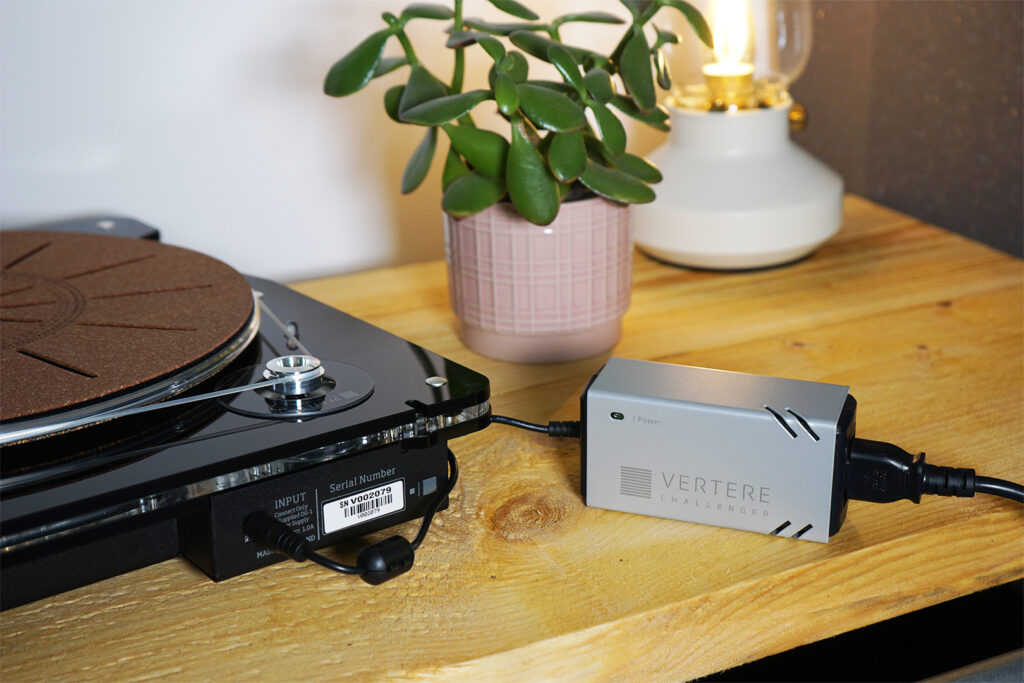
The silver box top right is Vertere’s discreet Challenger DC Power Supply upgrade, in place of the standard wall wart type
The way in which the Sabre separates out instruments to populate its soundstage, giving each appropriate tonality, weight and positioning has the finesse you’d typically associate with the finely finished moving-coil breed costing twice the price of the moving-magnet Sabre. The ex Wham! head honcho’s vocals remain consistently realistic and heartfelt as they go from centre stage to deeper into the mix with his whimsical “To do dos” as he cap off the chorus, adding to the track’s grand, complex and ethereal production.
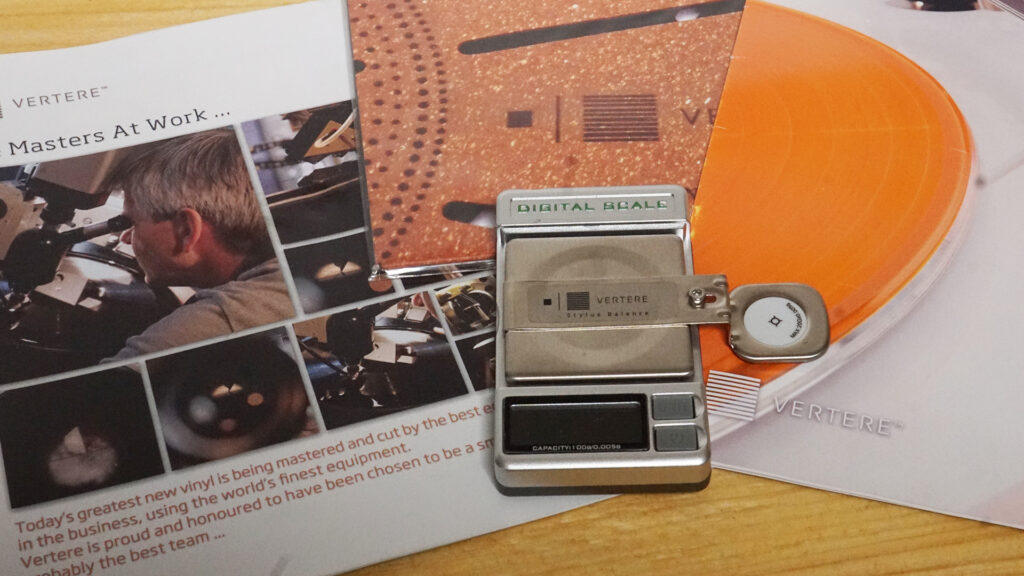
Accessories and clear instructions make the DG-1S a very easy deck to manage. The included digital weight scale adds to the user friendly feel
In summary
While this bundle may be entry level for Vertere, it’s clear that every element has been considered despite its place on the brand’s ladder. Sonically the SG-1S is a cohesive performer, with a sense of scale and body that in some ways defies its looks, with a beguiling sense of rhythm and timing to boot.
The Phono-1 is MKII L is perhaps the unsung hero of the group, with a quality sound and so many settings, few cartridges will be left wanting. All combined this is a thoroughly modern package that’s right were hi-end vinyl replay should be in 2023, rich in innovation, unique in style and with sounds to match.



